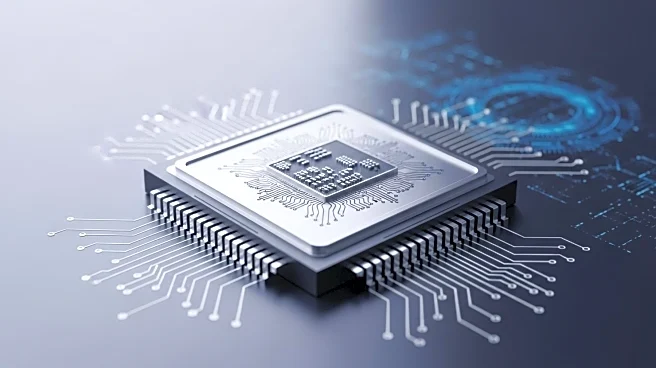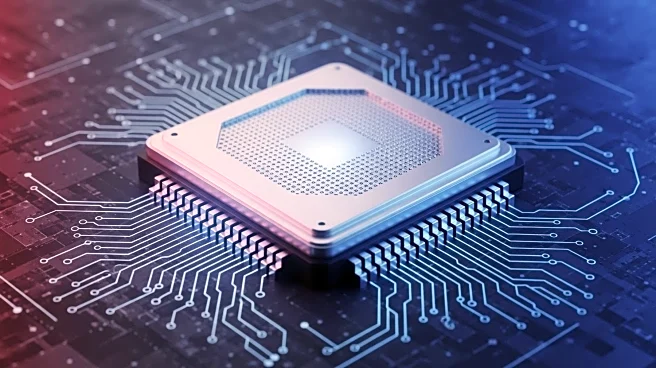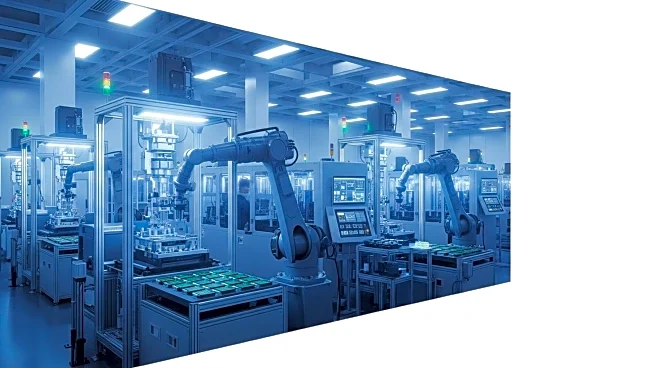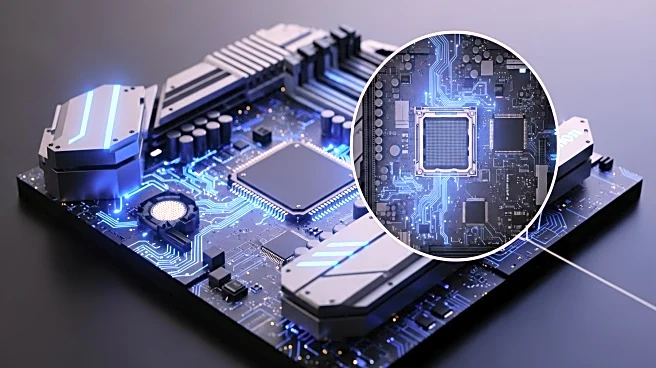What's Happening?
Qualcomm has unveiled its latest flagship processor, the Snapdragon X2 Elite Extreme, during the 2025 Snapdragon Summit. This new processor is designed for Windows laptops and promises to deliver desktop-class performance with impressive power efficiency. The Snapdragon X2 Elite Extreme features 18 cores and can reach speeds of up to 5.0GHz, a first for ARM-based processors. Benchmark tests show that it surpasses competitors like Apple's M4, AMD's Ryzen AI 9 HX 370, and Intel's Core Ultra 9 185H in CPU, GPU, and AI performance. The processor's architecture includes Qualcomm's latest Oryon CPU cores, an upgraded Adreno GPU, and a next-gen Hexagon NPU, emphasizing high instructions per cycle, advanced power gating, and unified memory architecture.
Why It's Important?
The Snapdragon X2 Elite Extreme represents a significant advancement in the performance capabilities of Windows laptops, potentially redefining expectations for premium devices. By matching or exceeding the performance of Apple's M-series chips, Qualcomm is positioning itself as a formidable competitor in the laptop processor market. This development could lead to thinner, lighter laptops with extended battery life, appealing to consumers and businesses seeking high-performance computing solutions. The enhanced AI capabilities of the processor may also drive innovation in on-device AI applications, impacting industries reliant on real-time data processing and machine learning.
What's Next?
Qualcomm plans to release the Snapdragon X2 Elite Extreme in the first half of 2026, with potential hardware showcases at CES in January 2026. As OEM partners integrate this processor into their devices, consumers can expect to see new laptops hitting the market by February or March. The release of this processor may prompt competitors like Apple, Intel, and AMD to accelerate their own advancements in processor technology, potentially leading to a new wave of innovation in the laptop industry.
Beyond the Headlines
The Snapdragon X2 Elite Extreme's architecture, including its memory-in-package design, could lead to more efficient data processing and faster access speeds, benefiting applications that require high bandwidth and low latency. This design approach may influence future processor developments, encouraging other manufacturers to adopt similar strategies to enhance performance and efficiency. Additionally, the processor's ability to maintain performance on battery power could shift consumer expectations for mobile computing, emphasizing the importance of power efficiency alongside raw performance.










